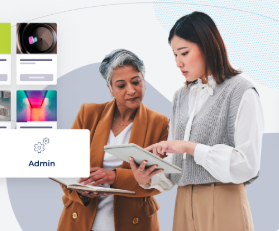The digital era has transformed classrooms, making virtual learning an essential part of education. As more students engage with online platforms, understanding and adapting to different learning styles becomes key to creating successful virtual experiences.
What Are Learning Styles?
Learning styles refer to the unique ways individuals absorb, process, and retain information. While some prefer visual aids, others thrive through listening or hands-on activities. The most common learning styles include:
Visual learners who understand best through charts, diagrams, and written directions.
Auditory learners who absorb information by listening to lectures or discussions.
Kinesthetic learners who prefer engaging through movement or tactile experiences.
Reading/writing learners who favor note-taking and written instructions.
Recognizing these preferences helps educators tailor instruction to meet the needs of each learner—even in virtual environments.
Why Adapt Learning Styles for Online Learning?
Virtual classrooms differ from traditional settings. The absence of physical interaction, body language, and spontaneous collaboration can affect student engagement. Adapting learning styles ensures students remain motivated, focused, and connected in an online setting.
Practical Strategies for Each Learning Style
1. Visual Learners:
Incorporate slides, infographics, and explainer videos.
Use virtual whiteboards and mind maps during lessons.
2. Auditory Learners:
Offer recorded lessons and live discussions.
Include podcasts or reading aloud activities.
3. Kinesthetic Learners:
Encourage interactive tasks like virtual labs or simulations.
Integrate short physical movement breaks tied to the lesson.
4. Reading/Writing Learners:
Provide digital note-taking templates and reading materials.
Use discussion boards for reflective writing or peer feedback.
Tools That Support Personalized Virtual Learning
Modern platforms support varied learning styles through:
LMS tools (like Google Classroom or Canvas) offering multimedia content.
Breakout rooms for group collaboration.
Digital journals and self-assessment quizzes to encourage metacognition.
Educators can also use adaptive software that responds to student progress and adjusts content delivery accordingly.
Encouraging Student Success in Virtual Settings
Supporting diverse learning styles means more than delivering content—it’s about creating connection. Frequent check-ins, personalized feedback, and celebrating student achievements help build a sense of belonging and increase motivation.
Final Thoughts
Adapting learning styles to virtual platforms empowers both students and educators. By recognizing how each learner engages best, we can make online education more inclusive, accessible, and effective. In this evolving educational landscape, flexibility and empathy are our greatest tools for helping every student thrive.














